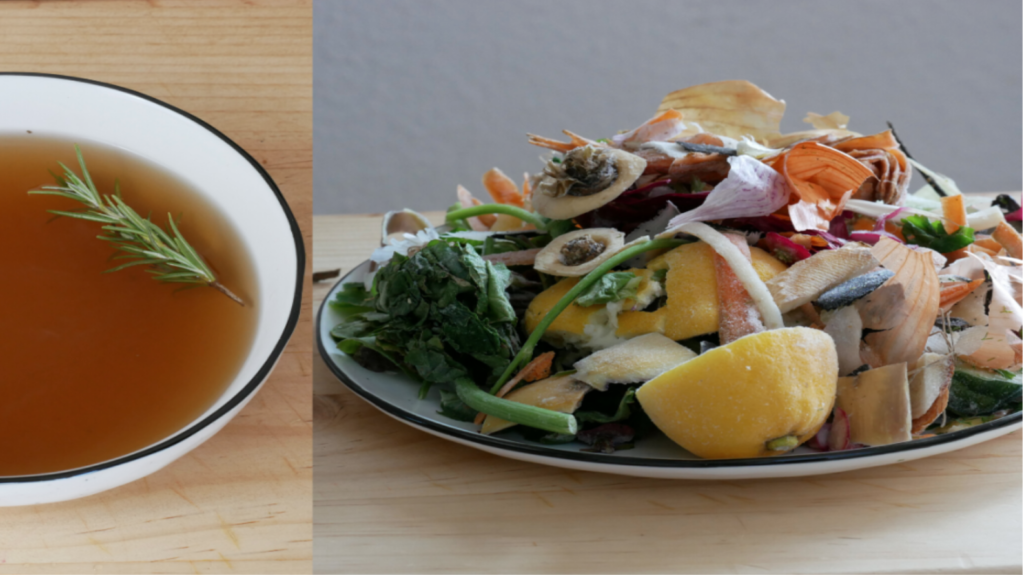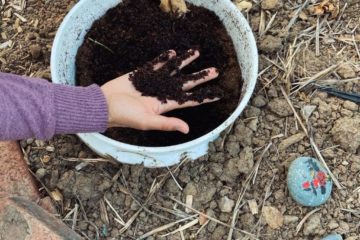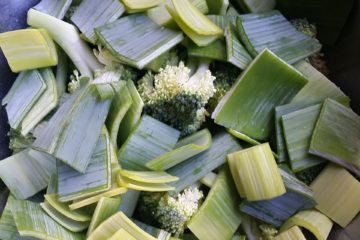Priti Patel, Education and Curriculum Development
Americans throw over 40% of their food away; but, zero-waste cooking can help millions of families reduce their food waste by making better use of their ingredients and helping them practice more sustainable cooking techniques (Escoffier, 2019). In zero-waste cooking, you use every part of the fruits, vegetables, meats, and other ingredients in your meal. Everything has a purpose and while some parts are used in future meals, other parts can be used for composting in your garden. Not only is zero-waste cooking extremely cost-friendly, but it’s also environmentally-friendly. It allows families to purchase the right amount of ingredients and make use of every part of the ingredients, from their roots to their stems. In terms of the environment, zero waste cooking reduces the amount of trash that goes to our landfills and improves the practice of composting. With a plan, zero-waste cooking is not only sustainable, but also extremely beneficial for our health and environment.

There are many different techniques that allow you to make use of stems, roots, stalks, peels, pits, and more. Let’s delve deeper into these techniques and learn how they promote zero-waste cooking.
Tops and Roots
Roots are essentially the tops and bottoms of vegetables that are often thrown into the trash. A better use of these parts is to incorporate them into your meal in a very simple, but effective way. For example, you can use the tops of carrots, turnips, and radishes in soups or broths. They also serve as great ingredients in smoothies or sauces as a blender easily breaks down these sections of vegetables (Englishman, 2018).
Stems
The stems of vegetables are also often thrown away or used as compost. But, even stems are excellent in meals. Chop and use them in soups or smoothies. For example, you can roast or sauté broccoli or cauliflower stems alongside your vegetables. In fact, they can add great flavor and texture. You can also use the stems of herbs as a garnish or blend them into a sauce (Sacks, 2020).
Peels and Pits
The peels of lemons, grapefruits, limes, or other citrus fruits are great for zesting. They can be added to salads as a garnish or incorporated in dressings to develop a tangy flavor. Aside from using peels and pits as compost, you can also use the skins of citrus fruits for sanitizing countertops in your kitchen. A fresh and aromatic scent is bound to fill your kitchen when you use these fruits (Englishman, 2018).
Consider purchasing ingredients that will help you produce zero-waste meals the next time you’re out buying groceries. Not only will this be beneficial for your health and the environment, but it will also become a lifestyle habit that is extremely satisfying.
Sources
Englishman, K. O. (2018). “Zero-Waste Cooking: How To Use Up Produce Scraps.” The Good Trade. https://www.thegoodtrade.com/features/zero-waste-cooking-tips.
Sacks, C. (2020, January 16). “Zero Waste Cooking – 17 Ways to Reduce Food Waste in the Kitchen.” Food Print. https://foodprint.org/blog/zero-waste-cooking/.
“Vegetable Broth with Kitchen Scraps – Zero Waste Cooking.” (2020, April 23). Happy Belly Fish. https://happybellyfish.com/recipe/vegetable-broth-with-kitchen-scraps-
“What is Zero-Waste Cooking?.” (2020, December 11). Auguste Escoffier School of Culinary Arts. https://www.escoffier.edu/blog/sustainability/what-is-zero-waste-cooking
/#:~:text=Zero%2Dwaste%20cooking%20means%20literally,and%20packaging%20from%20the%20ingredients.
“Zero Waste Cooking.” (2020, August 10). The New Indian Express. https://www.indulgexpress.com/mlaunches/wellness/2020/aug/10/zero-waste-cooking-vegetables-and-fruits-peels-and-seeds-27240.html.



0 Comments